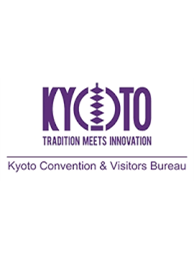The unique quantum physical and chemical properties inherent in nanostructured materials have been-for the most part-exploited by the microelectronics industry mainly based on plasma processing. Since IBM’s introduction of Damascene process into Cu wiring technology, the electrochemical processing has been also recognized. Now that, large-scale linkage of renewable energy with the electrical network forces to develop a highly-efficient hydrogen generation, storage and transportation technologies based on advanced catalysts. CO2 zero-emission or sustainable society concept induces the huge investments world-widely. The device performance strongly depends on the nano-structure creation on Gas-Solid, Liquid-Solid and even Gas-Liquid-Solid interface. Moreover, the system cost is accommodated to the mega-scale production stage. This is the reason why the congestion control methodology should be created interdisciplinarily.
Nucleation & Growth phenomena essentially couple between the interfacial
structure creation and mass transfer process in meso to macro-space. Many
in-situ diagnostic instrumentations as well as simulation methodology have
been developed in plasma and electrochemical processing field, but no mutual
knowledge exchange on the fundamental sciences has been tried. Accordingly,
the prime purpose of symposium is to provide a forum for discussion of
in-situ measurements as well as mathematical models of the relevant non-equilibrium
reaction and deposition processes in which electrons, ions, radicals, and
clusters interact at the substrate surface.
It is a good occasion to bring together the experts from the most popular
semiconductor technologies–ULSICs and TFTs into the electrochemical processing
field engaging in Energy Conversion & Storage to discuss ideas and
exchange opinions on future challenges cohesively. Both technologies are
based on similar principles and face common challenges and applications.
This symposium is organized similarly to Electrodeposition Gordon Research
Conference. It is held after International Conference on Semiconductor
Technology for Ultra-Large Scale Integrated Circuits and thin Film Transistors,
chaired by Prof. Yue Kuo (ECS President, Texas A & M) in Kyoto (May
16th to 23rd, 2019, Electronics and Photonics Division of ECS). Very timely,
WHTC2019 (World Hydrogen Technology Conference) is also scheduled from
June 2nd to 7th in Tokyo.
We encourage submission of titles for oral or poster presentations no
later than Feb. 15th, 2019March 31st, 2019 (Extended), to NGRC2019 office (NGRC2019@iae.kyoto-u.ac.jp).
Expected Session Topics include the following subjects:
(1) Hydrogen Energy Technology toward CO2 Zero-Emission Society
(2) Large-scale Renewable Energy Linkage with Electrical Network
Stationary Energy Storage
(3) Nucleation and Growth Phenomena in Electrochemical/Materials Processing
3a: Materials Processing: ULSIC & TFT, Solar Cell, SiC, Super Conducting
Devices
3b: Electrochemical Processing: Additives, 3D Interconnect, Magnetic
Recording Media,
3c: Advanced Catalyst for Hydrogen Energy, Water Splitting
(4) In-situ Measurements on Interfacial Reaction and Multi-scale Computation
KMC, Phase Field Model
(5) Electrochemical/Materials Processing under Extreme Conditions
Superconducting Technology or Materials Processing under Magnetic Field
Effects
Electrodeposition of Active Metals in High Temperature Molten Salts



